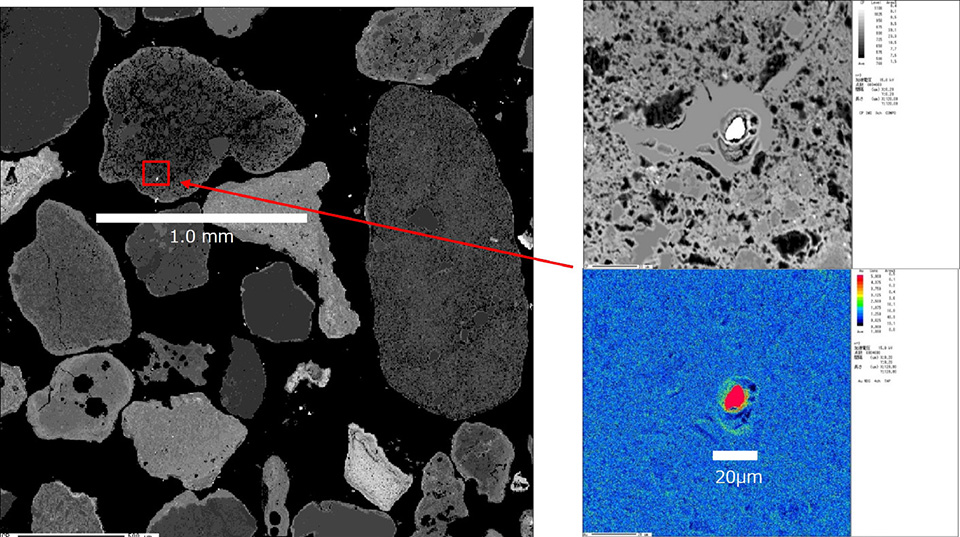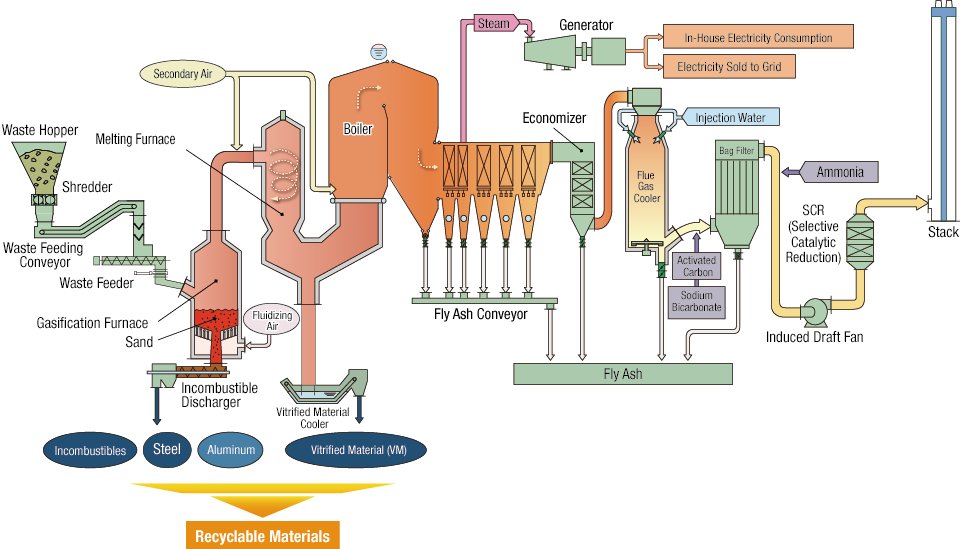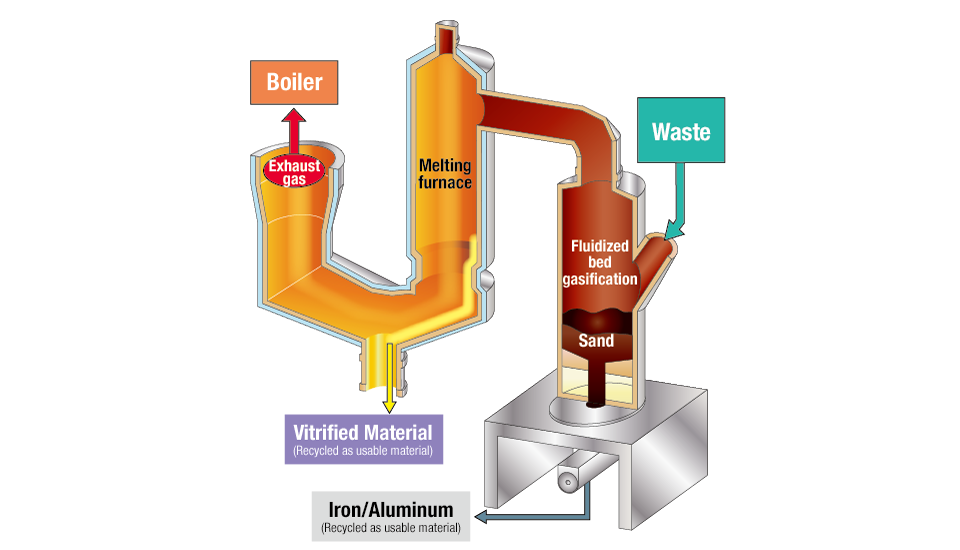October 2022
Waste to Energy Plant that Recovers Gold and Silver from Waste

Sagamihara City Minami Waste to Energy & Recovery Plant in Sagamihara City, Kanagawa Prefecture -

Gold bars (replicas) equivalent to the amount of gold recovered from the fluidized bed gasification and melting furnace

A Japanese company has succeeded in developing a waste to energy plant that can recover gold and silver from waste. Technological development is ongoing to recover other types of precious metals such as platinum, palladiumi and copper by applying this technology.

In June of this year (2022), it was reported that a total of about 30 kilograms of gold and silver had been recovered from a waste to energy plant at the Sagamihara City Minami Waste to Energy & Recovery Plant in Sagamihara City, Kanagawa Prefecture. The city was reported to have sold the recovered precious metals at a profit of about 37 million yen.
Fujita Jun, Professional Engineer (P.E.Jp) and Deputy General Manager of the Technical Improvement Section at the Environmental Engineering Business Unit of Kobelco Eco-Solutions, Co., Ltd., explains, “We succeeded in recovering gold and silver from the fluidized bed gasification and melting furnace which we designed and built. Owing to inadequate separation, some waste electric and electronic equipment is thrown away with household waste, so we knew that the precious metals used in electronic circuit boards were contained in the residue discharged from the incinerator, but until now there was no way to recover it as a resource.”
The fluidized bed gasification and melting furnace was initially developed to prevent the generation of harmful substances such as dioxins during waste thermal treatment and to reduce the environmental load of the final disposal. It consists of a fluidized bed furnace that gasifies waste by circulating sand at high temperatures of 500–550 degrees and a melting furnace that melts the ash discharged from the fluidized bed furnace at high temperatures for re-use as vitrified material (see Diagram 2). Iron and aluminum contained in waste could be recovered from the sand inside the furnace. The combustion temperature inside the melting furnace reaches as high as 1,250 degrees, so not only is the furnace less likely to produce dioxins but also the ash melts at these temperatures to form vitrified material, which is a material used in road construction. All of the heat needed to melt the ash is generated by the gasification of the waste, so no fossil fuels are required.
Fujita says, “In 2018, when we started developing the precious metal recovery technology, we had no idea where in the waste to energy plant the gold and silver could be found. The ash and non-combustibles eventually discharged from the furnace contained little gold or silver, so we were certain that it remained somewhere in the gasifier. After two years of survey we have finally discovered that the gold and silver remained concentrated in the sand accumulated at the bottom of the fluidized bed furnace.”
Typically, the gold content of gold ore mined from a gold mine is about 3–5 grams per ton of ore. By contrast, the sand at the bottom of the incinerator contained more than 6 kilograms (6,000 grams) of gold per ton.
At the Minami Waste to Energy & Recovery Plant, operations are suspended once every three to four months and maintenance work is carried out. By extracting the sand accumulated at the bottom of the furnace at that time and taking it to a refining plant, the Minami Waste to Energy & Recovery Plant was able to recover about 15 kilograms of gold and about 15 kilograms of silver in total in the 2021 fiscal year.
There was quite a big response to this news, and inquiries from local municipalities and recyclers nationwide followed one after another.
At present, gold and silver recovery has already commenced at five out of seventeen locations around Japan where the company’s fluidized bed gasification and melting furnaces have been installed.
This precious metal recovery technology reduces CO2 emissions to less than one-tenth of that of refining gold from gold ore, so it is environmentally friendly as well. If the technology advances as hoped, waste to energy plants may soon be able to recover not only gold and silver but also platinum, palladium, copper, and other metals. As Japan relies on imports for these resources, this technology to recover precious metals from waste to energy plants is not only useful, it will also contribute to the realization of the “recycling-oriented society”ii which Japan is striving to build.



* Silvery-white rare metal which resembles platinum.
** A society in which resource consumption is suppressed and the environmental burden is reduced by promoting the efficient use and recycling of things.

